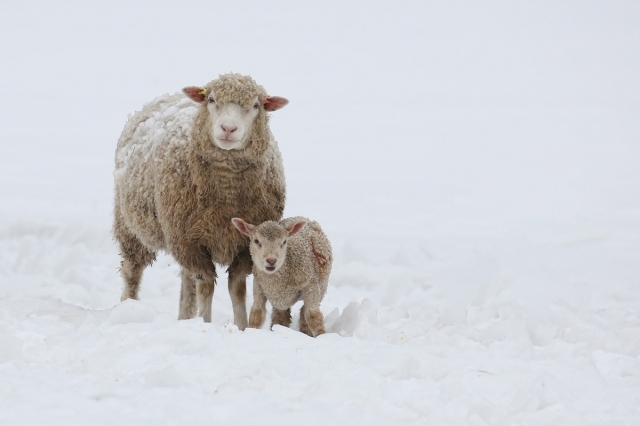Met Office
|
|
What kind of temperature swings are ‘normal’ in UK spring?
With forecasters predicting a marked shift in temperatures in the coming days, here we take a look at how commonplace temperature fluctuations are during a typical UK spring.
Spring snow fall can present challenges for livestock and livestock farmers. Picture: Shutterstock.
It’s certainly not uncommon for spring in the UK to see big differences in temperature. However, despite the lows expected in the coming days, the more climatologically notable weather for this time of year was actually the recent warm spell, which saw temperatures reach as high as 24.5°C in some places this week.
For reference, the highest daily temperature on record for March was 25.6°C in Mepal, Cambridgeshire, which was reported in March 1968. In contrast, the lowest daily temperature reported for March in the UK was –22.8°C at Logie, Aberdeenshire, in March 1958.
Dr Mark McCarthy, Scientific Manager of the National Climate Information Centre, said:
“It’s not unusual to experience a wide temperature variation during a typical spring.”
On average the UK sees around 14 days each spring where temperatures fall to 0.0° C or below, and even residents in central and southeastern England can expect to see temperatures drop to this level around 10 days each spring. Coastal regions and islands around the southern UK witness the fewest spring frosts on average.
Dr McCarthy added:
“Of course, you would expect the lowest and highest spring temperatures to occur at the beginning and end of the season respectively, but natural variation dictates that periods of lower than average temperatures are to be expected as we move through the season.”
The coldest spring in recent years was 2013, which was the ninth coldest spring in a series from 1884. The average temperature didn’t reach 6.0° C. During the season over 80 weather stations recorded daily maximum temperatures below 0.0° C and even the station at East Okement in Okehampton Devon recorded a daytime maximum temperature of –2.0° C on 11 March 2013.
Such variation in temperature during spring does present challenges to some areas of UK life, with sheep farmers particularly susceptible to temperature drops as lambing season comes in to full view. Farmers have to monitor the changing weather to ensure their ewes and new-born lambs are guarded against drops in temperature, but also ensure they can be outside if the weather allows for it.
Chief Executive of the National Sheep Association Phil Stocker said:
“The sector has endured several cold weather events during recent springs and these have wrought considerable hardship to both stock and hill farmers. However, being aware of the approaching change in weather type will allow farmers to buffer the impacts by taking action to avoid the worst losses.”
The up-and-down nature of spring’s temperatures also provides challenges for the UK’s gardeners, with overnight frosts the most feared weather and provide particular issues for magnolia and camellia flowers, as well as many fruit blossom and young fruitlets. If these plants are flowering for gardeners, spring remains a time when they have to be ready to ward off potential damage with coverings to stave off frost.
However, Chief Horticulturalist at the RHS Guy Barter said:
“Cold weather in April is not altogether bad, spring flowers, ornamental cherries and daffodils, for example, last longer when it is chilly.”
Original article link: https://blog.metoffice.gov.uk/2021/03/31/what-kind-of-temperature-swings-are-normal-in-uk-spring/



.gif)